-
Posts
8325 -
Joined
-
Last visited
Content Type
Profiles
Forums
Events
Gallery
Store
supertorial
Classifieds
Posts posted by Charlie Delta
-
-
Bill, pics or didn't happen! Did the exact same thing to mine when I just got them. Let's see if I can beat you to posting pics...
Planned on posting pics of my most recent modifications soon anyway.
0 -
-
-
Rising Sun: Part III
In our previous blog post about Rising Sun propreitor Mike Hodis showed off some of the treasured sewing machines he uses to produce his line. I certainly made some very good notes in case I came across any of the apparently impossible to find machines.
To get to the essence of Rising Sun --bluntly, their selling point-- I had to know whether his rare black head machines is the main difference between Rising Sun and other brands inspired by vintage workwear. "Just because you're sewing on old sewing machines doesn't mean much to me," says Hodis.
So what else is there?
It turns out that Rising Sun's philosophy on being "period correct" is more about mindset than replication. While Hodis is a long time student of turn-of-the-century vintage garments he does not show much interest in copying old clothing. Instead he has really gotten under the seams of those vintage pieces and mastered the details that show an article of clothing was made in, say, the 1920's. Just as there are certain methods and machines used for creating authentic keyholes there are nuances for pattern making, cutting, sewing, and every other step necessay up to the point of displaying workwear in the dry goods store.
Hodis explains that Rising Sun's outdoor hunting/fishing vest is sewn on the black head Singer single needle machine. Vintage pieces sometimes have the fabric selvage hidden down the back french seam, as a result of maximizing fabric utilization. I was surprised that this seemingly decadent use of selvage fabric actually minimized waste. The fabric itself is a playful twist to complement the authenticity of the construction. The 10.75 oz canvas has indigo yarns in both warp and weft and a selvage identification that manifests in the form of a ticking stripe of sorts down the center back where the actual selvage is hidden in the french seam.
It is in striving to be as authentic as possible in all these processes that makes Rising Sun so unique. And it seems that onces these constraints (of machines, methods, old timey standards for efficiency, etc) have been established Hodis is actually quite liberated to be as creative as he desires within surprisingly open boundaries.
Rising Sun's Yukon jean is an exciting exercise in being period-correct without necessarily copying a particular vintage garment.
cont'd below because of img limit.
0 -
And yet one member less, Sad!0
-
I actually really want to get my father a pair of those.
He used to always wear 101B's and wore them quite well actually, but only just recently switched to Levi's since Lee stopped offering the exact jean he liked.
0 -
^Those could possibly be the same as these ones mentioned in the LVC thread?
Not LVC related, but yesterday i bought the Jeans that are on the last page of "501 the evolution of the jean" limited edition version, as the were on sale at £60 down from £120. I had to go in three different shops in London, to find one which fitted me tagged at 32x34 but mesuring 35X34, which i cannot wash as the fit is rather snug. Distressed LVC Jeans, T-shirts and Orange tab re-issue were aslo on sale at half price.the 2008 may never became collectible and make into the remarkable jeans, but it all organic cotton and natural indigo and it smells deliciously.The only thing that the staff knew about them was they will shrink.
Sadly, apart from a few fanatics nobody is interested in LVC. Not even the staff at levi's stores in London.
0 -
Yep, couple of seasons of BW for Capucci were produced, right around when I was there. Didn't get to handle too much of it apart from the occasional toille and then finished stuff in Maria Luisa etc.
Was all amazing, that stuff really proved to me how amazing an designer he is, strip off all the prints/neon/crazyness and you'll find these beautifully refined designs and suggestions for new ways of dealing with shape/volume/silhouette.
0 -
Cannot rep, but Billy, HA HA HA HA HAAAAAAA!
0 -
Last couple of posts FULL OF WIN!
0 -
my bad, duck, i'm glad i said 'maybe' . now that i have your attention, what's up with that grail jeans thread?
You're right, it is about time I'd start looking into that!
0 -
Just out of curiosity, I called J Crew about the shirt and they said it was made in the US. So, it's essentially a J Crew copy of the original line that was made by Sugar Cane, which is what I suspected. That said, I don't think 'partnered with' was entirely off base...
I might've cause this "J.Crew copying MF" confusion by using "copy" in my initial post about this, what I meant was copy, as in written content.
To get this clear again, J.Crew is (apart from the tees which I can't say much about) not collaborating with/partnering with/working together with/whatever with Mister Freedom!
They are selling selected Mister Freedom and Mister Freedom Sugar Cane pieces, not different in any way shape or form than the pieces that Self Edge or MF himself sells.
0 -
someone gave me some homemade soap that smells really nice, i left it in my drawer and now every time i open it i get a whiff. its nice.
Hey Whit, read/seen Fight Club???
0 -
Figured I'd repost these again aswell:
Evisu Lot ???? No.?
Thought I'd post these up here, no before pictures unfortunatly.
Worn on and off for about 2 years and after that almost everyday for about 2 more.
First soak at year and a half, after that about every 9 months, first machine wash about 3 months ago.
It's the model with the kimono silk on the turn ups, it's made in italy but way before all that Evisu EU crap. Basicly the first Evisu you could get here. They started my raw denim love, still have an untouched pair waiting for me.
Not that happy with how they turned out, stopped wearing them.
0 -
those are maybe the most worn jeans i've ever seen that weren't found in a mine somewhere. i wonder what the back looks like...
oh, they are the mizuhiki knot pockets...please check out the above link. this gallery will make anyone geek!
Guess you never saw the first pair of Evisu's that I wore to the ground?
Evisu EV-001
I know this isn't really what people on here get excited about but I thought they're interesting enough to post them.
Going for a bit different wear than just defined combs and whiskers (also I didn't have a clue that there were names for the wear on ones jeans back then), I wanted to try to really just let them be and see what time would do to them. I liked the way they looked all destroyed and intentionally not repaired them.
I believe everyone knows what these look like raw and besides I don't have before pics.
- Evisu's EV001 (more of the "made in Italy but before EU ed.") with painted gulls
- Worn for god knows how long everyday (and quite some nights too) I believe they're 6 or 7 years old, not 100% sure though
- first wash after a year and a half or so and numerous soaks and machine washes after that
- had to patch the holes at the front pockets and at the back above the right pocket 'cause it was getting a bit too "cold". I did use Japanese Evis denim to patch them up ('cause I am an idiot!) Invisibly stitched it so it would look like a fresh pair of jeans under a destroyed pair, originally planned to patch all holes this way
- top button fell off, used a big safety pin to keep them in place, one beltloop fell off
- etc. etc.
- Retired †
0 -
I bumped this because of the OP, not to create another Evisu thread.
I moved all the unrelated post to the existing Evisu thread, here.
Please stay on topic!
0 -
Needs moar random shit on phone plz!!!
 0
0 -
Natse, if you're on mac, this is what you're looking for:
What it does is disabling your networking for a period of time that you select.
It simply doesn't allow your mac to go online.
"Enjoy..."
0 -
I look good in that vest...
0 -
"Where to buy" questions would go in supershopper. But you would've known this, if you had read the 2nd sticky on top of this page.
0 -
Couple reasons why I think the way J.Crew approaches/has been approaching this is wrong.
"Partnered up" in my eyes means something along the lines of "collaborated with"/"worked together with" and I know for a fact that this is not the case with the white chambray, nor with the foul weather coat.
They are not specially labelled, let alone developed alongside, or produced especially for J.Crew, it is simply them carrying MFSC product!
I believe Christophe did those tshirts exclusively for J.Crew, which is fantastic for them, but that's that.
Essentially, what they, or their pr/marketing dept is doing is coming up with some story to make the product even more interesting, while MF doesn't need any of that.
Let the product speak for itself, highlight some of the things that make it special instead of coming up with random facts such as "hand-painted metal buttons"... What the heck is a hand-painted button???
(Or even better, the "only 7 made" claim that came with the foul weather coat, quoted before...)
Despite the attention it has been getting, what Mister Freedom does is essentially very niche, even on a place like superdenim.
J.Crew carrying selected pieces is a good way for the MF to reach a wider audience.
J.Crew markets itself as part of this whole "workwear/heritage/vintage" family of brands, and operates on the lower end of the spectrum.
Meaning they have a wider, less hardcore/educated audience.
In my opinion, the biggest chance they are missing by pulling stunts like this is that of educating the customer.
While they could be saying "let us show you something good, special and made with care and an attention to detail you don't see much anymore these days", instead they went for the "partnered with, blah blah, hand-painted buttons, blah blah...". Pity!
Anyway, repeating myself...
/rant
0 -
The copy J.Crew puts up along with their pics of the MF stuff is misleading!
Mister Freedom didn't team up with J.Crew to do that shirt, nor did he make it exclusively for them, with them or whatever.
People are already re-blogging it as "J.Crew exclusive" blah blah...
smh
0 -
Pacioli keeps dropping knowledge, figured I'd post it here as well, so we have the whole story in this thread.
Enjoy
Rising Sun: Part II
Rising Sun makes their denim pieces in the small workshop behind their haberdashery in Pasadena, CA. To understand the significance of this we should look at the status quo of jeans production. Generally speaking in today's fashion industry designers "create" on paper and rely on factories to deliver a product that hopefully matches their specifications. To have your own cutting and sewing capability means to be empowered to produce a product that satisfies you 100%.
Talking to the passionate propreitor Mike Hodis you will see he not only holds this uncompromising stance but takes it to the next level. His workshop produces garments to his full specs completely on antique black head sewing machines.
There is a wild excitement to knowing the stitches on your jeans were created on the Singer black head single needle sewing machine. The sleek and minimalist appearance of this industrial strength machine offers stark contrast to the other black head machines with their complex, elegant motions. This black beauty was utilized between the late 20's and 50's. It would have been used for operations on Levi's buckle back garments. This would have been one of the machines that created the uneven, single needle arcuate stitches you see on vintage Levi's.
Singer Single Needle:

Next up is the Singer black head lap seam machine. "Easily from the 30's," boasts a proud Hodis. When you look at certain vintage workwear garments and observe a double needle chainstitched fell seam it was likely done on this machine. Those who study the details of vast amounts of vintage garments will notice that some double needle chainstitches have just a tad smaller width between the two stitches than those found on garments produced with more modern equipment. It is this "perfect gauge" that makes this machine so special. A small tidbit: this machine is fondly referred to by machine operators as Cabillo (horse) for its resemblance to a black stallion (where's your imagination?). It happens to also be a workhorse machine for Rising Sun.
Cabillo:

But the rarest machine of them all is surprisingly responsible for one of the most overlooked details on denim garments: the button hole. A beautiful button hole with vintage characteristics is a very tricky thing to create. Rising Sun skips all the modern interpretations and goes straight to holy grail of vintage sewing machines with his black head Singer keyhole machine. By all rights and reason Hodis should really "donate" this majestic creature to a museum to preserve for all time but instead it is in the back of his haberdashery creating keyholes for garments that only the true enthusiast can appreciate. It is nearly impossible to find in operable condition.
The rare black head Singer keyhole machine:

This antique machine is over 70 or 80 years old and creates some of the most graceful keyholes you will see. The stitches are much tighter and does not extend into the garment as much as modern button holes do. After the stitches are put down Rising Sun workers hand cut the holes required for buttons. This is done with an old hand cutting tool.
Hand cutting tool for keyholes, made by Heinisch:


Between listening to Hodis talk about the cams, shafts, and belts of certain sewing machines and studying his garments it became very obvious that it is one thing to design vintage details (hidden rivets, back buckles) into clothes and an entirely different thing to create them using period-correct methods and machines. In the next post we will explore this idea further and look at some of the clothing Rising Sun produces.
0 -
LOL Dolly clicked this threak thinking it was about Naked broads, kinky sex, tits, ass, etc.
0


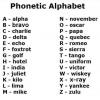











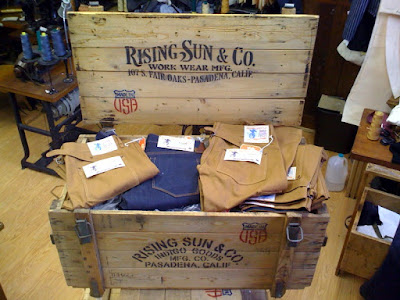
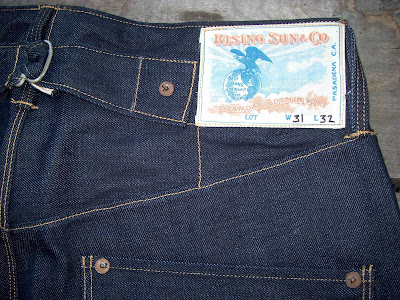
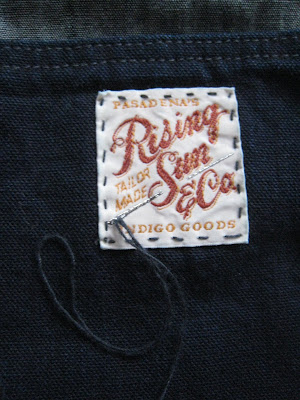


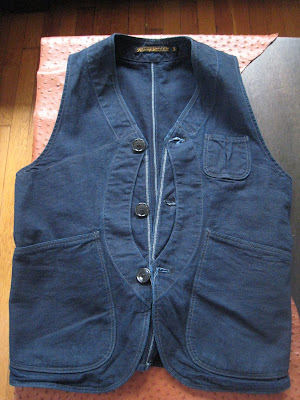









MISTER FREEDOM
in superdenim
Posted
- 7161: 14oz.301 "Okinawa"(left leg), 401 "Hawaii"(right leg) & Edo Ai (knee patch & details)
- 7163: 11oz. 50%cotton 50%Sugarcane mix MF exclusive, selvedge denim, wouldn't compare it to the Hawaii, it's far more of a light blue as opposed to the dark blue normally associated with indigo, there has also never been any mention of raw materials for the fabric coming from Hawaii
- 7161md.: 14oz. 301 & 401, no Edo Ai
- P-Coat & Liberty Issue P-coat: 14oz. 301
- Denim utility shirt (lightweight CPO): 6oz. 100% cotton selvedge denim
- CPO, liberty issue: 11oz. 301
- Signal Vest: 11oz. 301, 14oz. 301 chest pockets
- Pants, Shore (Cargo pants): 11oz. 301
- Jacket, shore & Shorts, shore: MFSC exclusive 11oz. "white denim"
- Seamans Bag: 14oz. 301
Alternatively:
- 14oz 301 "Okinawa" denim: 7161, 7161md., both P-coats, the Seaman's bag & chest pockets on the vest
- 11oz. 301 "Okinawa" denim: Liberty issue CPO, Signal Vest, PS-09, pocket lining on the N-1K Deck pants,
- 14oz 401 "Hawaii" denim: 7161, 7161md.
- 14oz. Edo Ai: Just some details on the 7161
- 11oz. MFSC exclusive 50/50 denim used for the 7163
- 11oz. MFSC exclusive reversed warp/weft denim "white denim": Shore jacket, Shore shorts & cinch on the Vest
- 6oz. 100% cotton selvedge denim used on the denim utility shirt
That should be all with regards to the denim used.